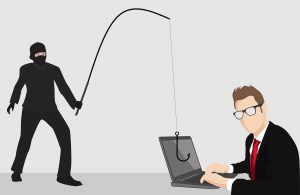Every passing year brings new trends in the workplace: are you old enough, for example, to remember switching over from actually walking across your workspace to speak to a colleague or employee to just instant messaging them? (Yes, people used to actually get up and do that.) And, while working from home is not a new phenomenon, most people would agree that WFH became the biggest trend of 2020, and remains so for 2021. If your small business made the hasty transition to remote work last year, how has it been for you? And do you envision ever going back to the ways things were before the pandemic hit, or are you planning to make the “new normal” just plain “normal?” It turns out, it might actually be good for your growth to stick with the work-from-home model, but before you make your decision, let’s examine the pros and cons.

The Telecommuting Trend
Again, working from home is not a new thing. But consider this: the Brookings Institute estimates that currently up to half of all American workers are working from home. That’s more than double the number that worked from home in 2017-2018! If you are one of the many business owners who switched to a work-from-home model last year, you probably had little time to prepare for the change, and were forced to rig up a hodgepodge of apps and software to keep everyone connected. But now that you’ve had a whole year to get some breathing room (has it been that long??), you might be finding that it’s really not so bad.
If you’re kind of digging having your employees work remotely, you’re not alone. A Gartner survey of company leaders found that 80% plan to allow employees to work remotely at least part of the time after the pandemic, and 47% will allow employees to work from home full-time. In a PricewaterhouseCoopers survey of 669 CEOs, 78% agree that remote work is here to stay for the long-term.
And employees? According to one survey, 65% of employees said that they want to continue to work from home full time, and 31% said they would like to have a hybrid work environment in the future – that’s 96% of employees who say they would prefer to work from home in some capacity!
The Pros of Permanent Work from Home
The statistic above should be the first “pro” that you consider when deciding whether to make a work-from-home model permanent. Despite the inevitable quarantine-related complaints, it seems that most workers actually want to be home; in fact, 27% of workers say that the ability to work from home is so important to them that they are willing to take a 10% to 20% pay cut to work remotely. In addition, 81% say they would be more loyal to their employer if they had flexible work options.
Employee satisfaction and loyalty are definitely one big advantage to permanent remote work. Remember, those two things can go a long way towards keeping you growing: happy employees are productive employees, and loyal employees will save you the staggering costs of losing employees and finding new hires. So what other advantages are there to sticking with WFH?

- Higher productivity rates – Worried that employee productivity rates are ultimately going to plummet if they continue to work from home? It might not be a problem; in fact, your employees might actually become more productive. Studies show that remote workers are 35 – 40% more productive than their in-office counterparts. In addition, 94% of employers said their employees were as productive (67%) or even more productive (27%) since they started working from home during the pandemic. And employees themselves? Multiple surveys have revealed that 75 – 95% of them feel that their productivity levels have been the same or even higher since they started WFH. Need more? Remote workers averaged 27 minutes of unproductive time a day, compared to 37 minutes for in-office workers, and they worked an average of 1.4 more days every month (or 16.8 more days every year).
- Big savings for you – All of that productivity can add up to a big boost to your bottom line, especially since businesses lose $600 billion dollars a year to workplace distractions. Not only that, but large business owners save $11,000 per year on each remote employee – and, while your savings as a small business owner will likely be less, you’ll still keep a good chunk of change in your pocket by switching to permanent WFH. Think savings on money-sappers like office space rent, equipment, furniture, utilities and supplies.
- Bigger talent pool – Struggling to find the best hires for your small business in your area? With a remote workforce, you have access to hires from all across the country.
- Collaboration does happen remotely – Sure, we’ve all heard all the jokes and complaints about endless Zoom or Slack meetings, but all of the advancement in video conferencing software means that your workforce can effectively collaborate and communicate, no matter where they are. In fact, consider this: in a recent survey of remote workers by national staffing company Robert Half, 20% of respondents said they have stronger relationships with co-workers now. Employees who are parents had an even stronger response: they are now 3 times more likely to develop deeper relationships with their co-workers.
- Readiness – Let’s hope we never have to go through another crisis like the current one, but the truth is, we can never know what the future holds. Having a flexible, agile workforce and business structure means you’ll be ready for anything.
The Cons of Permanent Work from Home
Working from home permanently, though, might not be right for every employee or every business. Not everyone works well remotely, so the following could become problems:
- Distractions – Yes, many workers ramp up their productivity when left to their own devices at home, but some might find it difficult to shut out the family life going on around them, or the lure of a long lunch break with Netflix.
 Poor work-life balance – While many employees relish the idea of rolling out of bed, getting their work done and then unwinding at home, some might have a difficult time drawing the line between what is work time and what is home time. When those lines blur too much, distractions and poor morale can hurt productivity.
Poor work-life balance – While many employees relish the idea of rolling out of bed, getting their work done and then unwinding at home, some might have a difficult time drawing the line between what is work time and what is home time. When those lines blur too much, distractions and poor morale can hurt productivity.
- Isolation – Similarly, you might end up with less satisfied and less productive employees if they find that communication is suffering as they struggle to navigate working from home permanently. Sometimes Zoom meetings just can’t replace face-to-face collaboration; in addition, virtual hangouts and get-togethers are fine for some people some of the time, but other employees (especially young, single ones) might feel like they’re missing out on a work-based social life.
- Lack of control – For you, the employer, having a remote staff means giving up some measure of control. For example, you won’t have the ability to pop down the hall and into an employee’s office to check what they’re working on. Sure, you can try out employee monitoring software, but some employees might end up feeling like a digital “big brother” is always watching them, which could also hurt morale.
The Steps Towards Making WFH Permanent
So is permanent WFH right for your business? If you find that you’re checking off more of the pro boxes, and the cons aren’t such a problem for you, then maybe it’s time to consider switching to an all, or at least part-time, remote model. If you are considering making permanent WFH your new reality, consider these steps:
- Make sure you have the right communication software – Choose the right video conferencing software for your business (and it might not be Zoom!).
- Establish a routine – Encourage employees to have a dedicated workspace, and set a good example by doing so yourself. Agree on set business hours, and try to be consistent with meeting times if possible. Which brings us to…

- Have a clear purpose for your meetings – Zoom burnout is real. Limit video meetings if at all possible to those that are really necessary, and make sure there is a clear purpose and set agenda that everyone is on board with.
- Set company policy – There’s no getting around it: you’ll have to adjust company policy – so be very clear what it expected from remote employees. But remember, you also need to…
- Be flexible – Working from home has its own unique set of challenges, so be ready to roll with the punches. Sometimes technology fails or employees need a little leeway to deal with a family issue; have a clear policy for how they should communicate with you and what your expectations are, but also cut them a little slack if need be.
Finally, congratulations are in order – you’ve made it through over a year of navigating the uncharted waters of keeping your business running remotely. At first, it might have felt like an impossible task, but as time goes on, if you find that this “new normal” of WFH is working for you, then go with it. There’s plenty of evidence to suggest that it can be beneficial to your bottom line – and, think about it, you might never have to wear nice pants ever again!



